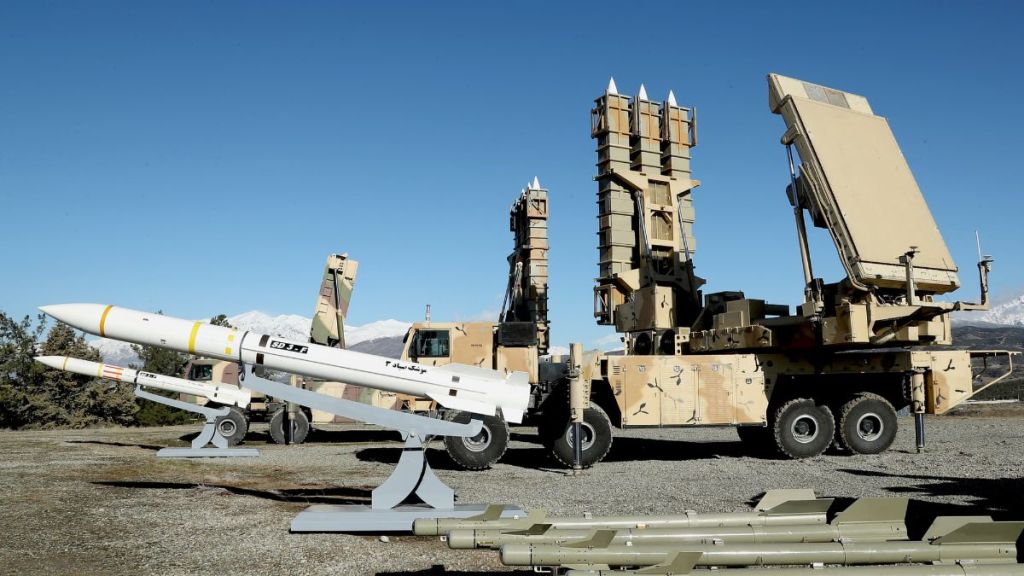The United States is deploying its advanced Terminal High-Altitude Area Defence (THAAD) missile system to Israel in response to escalating tensions following Iran’s missile attacks.
This strategic move not only strengthens Israel’s air defences but also highlights deepening US involvement in the region. With the backdrop of increasing missile threats, particularly from Iran, THAAD’s deployment is poised to play a critical role in safeguarding Israeli territory.
THAAD: What It Is and How It Works
Developed by Lockheed Martin, THAAD is a mobile missile defence system designed to intercept short- and medium-range ballistic missiles during their final phase of flight. Unlike older defence systems that rely on explosive warheads to destroy incoming threats, THAAD uses “hit-to-kill” technology. This means it directly collides with the target missile, neutralizing it through impact. This technology provides higher precision and ensures minimal collateral damage, making it a preferred system for modern missile defence strategies.
Each THAAD battery comprises six truck-mounted launchers, 48 interceptors, an advanced radar system, and a fire control unit, typically operated by around 95 personnel. The system’s radars can detect and track multiple targets simultaneously, increasing its effectiveness in complex threat environments. Moreover, THAAD can be rapidly deployed and offers protection both within and beyond the Earth’s atmosphere, making it highly adaptable to a wide range of ballistic missile threats.
THAAD’s role goes beyond merely intercepting incoming missiles. It integrates with other missile defence systems, such as Israel’s Iron Dome and Arrow, to create a layered defence strategy. While the Iron Dome focuses on short-range missile interception and David’s Sling on medium-range threats, THAAD fills the gap by targeting longer-range and higher-altitude missiles, offering an essential upper layer to Israel’s defences.
Why the US is Sending THAAD to Israel
Iran’s October 1 missile strike on Israel, involving nearly 200 ballistic missiles, exposed gaps in Israel’s existing missile defence systems. While Israel already has sophisticated defences in place—such as the Iron Dome, David’s Sling, and the Arrow system—these primarily handle short- and medium-range threats. The Iron Dome intercepts short-range missiles, David’s Sling addresses medium-range attacks, and the Arrow system targets long-range threats.
However, Iran’s increasingly advanced missile capabilities, including its hypersonic missiles, have proven difficult for these systems to fully neutralize. Hypersonic missiles, which travel at speeds exceeding Mach 5, can evade traditional missile defence systems due to their high velocity and ability to manoeuvre unpredictably. In particular, during the recent strikes, Iran reportedly employed its Fattah hypersonic ballistic missiles, a new weapon that many defence analysts believe poses a significant challenge.
With these evolving threats in mind, the US has decided to send THAAD to Israel. The system’s advanced radar, hit-to-kill interceptors, and ability to counter high-altitude missile threats make it a crucial asset for defending Israel’s airspace. This deployment also involves the dispatch of approximately 100 US troops, who will operate the system in coordination with Israel’s existing missile defence forces.
Strategic and Diplomatic Significance
The deployment of THAAD to Israel has far-reaching implications. First, it signals a significant increase in US involvement in the region’s ongoing conflict. While the US has always supported Israel militarily, the THAAD system represents a more direct form of engagement, with American troops on the ground operating the system. This development comes as Israeli Defence Minister Yoav Gallant warned of an imminent and “lethal” response to Iran’s missile strikes, which were carried out in retaliation for the alleged assassination of Hezbollah leader Hassan Nasrallah.
Second, this deployment showcases the US’s commitment to Israel’s security at a time when regional tensions are running high. However, this move also places US forces directly in harm’s way, a concern voiced by Iranian officials. The presence of US troops operating THAAD increases the risk of direct conflict between the US and Iran, further complicating diplomatic efforts to reduce tensions.
Iran’s Reaction
Iranian officials have been vocal in their criticism, arguing that the presence of US troops and advanced missile defence systems in Israel only serves to escalate the conflict. Iranian Foreign Minister Abbas Araqchi issued a warning that the deployment “endangers American troops in the region.” Tehran has framed the move as a provocation, interpreting it as part of a broader US strategy to counter Iran’s growing influence in the Middle East.
Iran’s reaction reflects its broader concerns over US involvement in regional security matters. The deployment of THAAD could be seen as a direct response to Iran’s evolving missile capabilities, including its hypersonic weapons, which have the potential to alter the balance of power in the region. Iranian state media claims that their recent missile strikes, including the use of Fattah hypersonic ballistic missiles, were a demonstration of their ability to challenge even the most sophisticated missile defence systems.
Despite this, analysts suggest that THAAD could be an effective countermeasure to Iran’s advanced missile arsenal. While Iran’s hypersonic missiles pose a formidable threat, THAAD’s sophisticated radar systems and high-speed interceptors are designed to neutralize such threats at high altitudes. The success of THAAD in countering Iranian missile attacks may depend on how effectively it can be integrated with Israel’s existing missile defence infrastructure.

